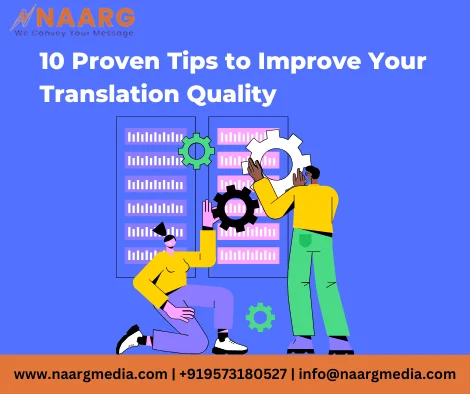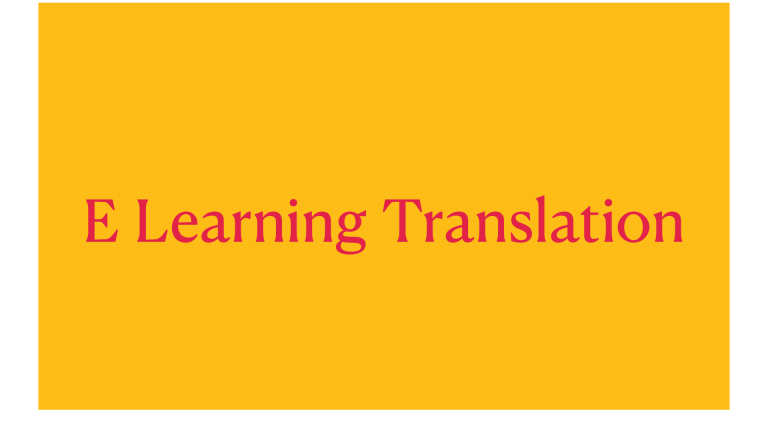We are now living in a world where communication transcends borders, and likewise, the demand for high-quality translations has never been greater. But amidst all this, how do you ensure that your translations not only convey the correct message but also resonate with your audience?
Whether you are translating for a business project or a content creator looking to reach a diverse audience. The effectiveness and accuracy of your translation can surely make or break the core message of your brand.
You must be wondering how to ensure that your translation quality is top-notch. Don’t worry! In this blog, we will explore 10 proven tips to improve your translation quality and how to stay ahead of the curve. This will not only help you improve the accuracy and quality of your translation.
But it will also help you create content that resonates deeply with your target audience.
So, let’s get started.

Importance of High-Quality Translation
High-quality translations go far beyond merely converting words from one language to another. Accurate and high-quality translations do more than convert words from one language to another. They capture the essence, cultural nuances, tone, and context of the original message.
Thus ensuring the original message resonates with the target audience. When you have poor translations, can lead to miscommunication, cultural blunders, and even damage to a brand’s reputation.
In contrast, precise and culturally aware translations enhance customer satisfaction, strengthen brand credibility, and also open doors to new markets. Also, did you know that the global translation services market is expected to reach a value of US $42.2 billion in 2024?
And by 2034, the demand for translation services is expected to rise at a CAGR of 2.5% and reach a market size of US $54.1 billion.
These statistics show that shortly, consistency and accuracy in translation services will be paramount. Furthermore, as businesses increasingly operate on a global scale, the demand for high-quality translation is not just a necessity; it is a competitive advantage.
Key Principles of Effective Translation
To have an effective translation requires more than just linguistic proficiency. For a translation to truly resonate with the target audience, it must adhere to several key principles. Below is a list of some of the fundamental principles.
1. Accuracy
Accuracy is the foundation of any good translation. It means conveying the original message without altering its meaning, tone, or intent. High-quality translation should be faithful to the source context while being clear and understandable in the target language.
2. Cultural Sensitivity
As everyone knows, language and culture are closely related. So, effective translation requires a deep understanding of cultural nuances, idioms, and context. A professional translator must ensure that the content is culturally appropriate for the target audience. Thus avoiding any misinterpretations or offensive language.
3. Consistency
Consistency is the key to any translation project. So, maintaining consistency in terminology and style across different sections of a text or related materials is crucial. It helps preserve the brand voice and ensure that the translated content always aligns with the original message.
10 Proven Tips to Improve Your Translation Quality
We have listed 10 proven tips to improve the quality of your translation projects. Let’s have a look at them.
1. Understand the Source Material Thoroughly
This is one of the basic requirements for any translation. So, before diving into a translation, always take the time to fully understand the source text. And familiarize yourself with the subject matter.
It is also essential to clarify any ambiguities with your client without hesitation. Moreover, a deep understanding of the source text lays the foundation for an accurate and effective translation.
2. Leverage Translation Technology Wisely
Machine translation tools like Translation Memory and CAT (Computer-Assisted Translation) tools can significantly improve the efficiency and consistency of translation. However, it is essential to keep in mind that these tools should be used as aids and not crutches.
So, always review and refine machine-generated translations to ensure they meet the required quality standards and accurately convey the intended meaning.
3. Develop Cultural Competence
It is more than evident that language and culture are deeply intertwined. So, to produce a high-quality translation, you must be aware of the cultural nuances, idioms, and norms of the target audience.
All this cultural competence allows you to adapt the translation in a way that resonates with your audience. Thus avoiding any cultural faux pas and enhancing the overall impact of the text.
4. Invest in Continuous Learning
Our language industry is constantly evolving with new technologies, and new terminology trends are emerging regularly. So, it is essential to stay updated by attending workshops, taking online courses, and also participating in professional translation communities.
Once you get on the path of continuous learning, it not only sharpens your skills but also keeps you competitive in the fast-paced world of translation.
5. Use a Style Guide and Glossary
As you know, consistency is the key when it comes to accurate translation. So, it is essential to create a style guide and glossary for each of your clients or translation projects. This will help you standardize terminology, tone, and formatting. Thus ensuring that the translated content aligns with your client’s brand and messaging.
6. Proofread and Editing
Editing and proofreading are yet another key component for accurate translations. So, when the initial translation is completed, you need to take a break before reviewing the text with fresh eyes. And then look for errors in punctuation, grammar, and spelling.
Also, look out for inconsistencies in terminology or tone. A thorough review of your translated work can significantly enhance the quality and professionalism of the final translation.
7. Collaborate with Experts
You can consider collaborating with subject-matter experts if you are working on a specialized translation. The insights of subject-matter experts can help you navigate complex terminology and ensure that the translation is relevant and accurate.
This collaboration with subject matter experts is particularly valuable in fields like medicine, law, and technology, where precision is paramount.
8. Manage Time Effectively
There is no doubt that quality translation requires time. So, avoid rushing through a project to meet tight deadlines, as it can lead to mistakes and oversights. Always plan your work schedule carefully, allowing sufficient time for research, translation, and multiple rounds of review.
If you have effective time management, it can ensure that you deliver high-quality translations without compromising on accuracy.
9. Seek Feedback and Apply it
Always seek constructive feedback, as it is invaluable for improving your translation quality. You can seek feedback from clients, colleagues, or mentors, and then refine and review the translations.
Identify areas where you can improve and apply these lessons to future translation projects. Continuous improvement is the hallmark of a successful translator.
10. Stay Updated with Industry Trends
The translation industry is growing rapidly with new trends and technologies that are emerging constantly. Always stay informed about these trends and developments by reading industry blogs, attending conferences, and engaging with online communities.
When you are aware of industry trends, it will help you stay ahead of the curve and ensure that your translation practices remain relevant and effective.
Tools and Resources to Enhance Translation Quality
There is a wide array of tools and resources available to help translators and interpreters achieve higher quality and efficiency. Listed below are some of the most valuable ones.
1. Computer-Assisted Translation (CAT) Tools
Computer-assisted translation tools are essential for professional translators. These tools break down the text into segments and store translations in a Translation Memory, which can be reused in the future. Some popular CAT tools like SDL Trados and memoQ help maintain consistency, improve efficiency, and ensure that no segment is overlooked.
2. Glossaries and Terminology Databases
Maintaining terminology databases and glossaries of terms specific to each client or industry is crucial for consistency. Many tools in SDL MultiTerm allow you to create and manage glossaries. Thus ensuring that key terms are translated uniformly across different projects.
3. Machine Translation (MT) Engines
While it is quite evident that machine translation should not replace human translators, it can turn out to be a useful tool for generating initial drafts or handling large volumes of text quickly.
Various machine translation engines, like Google Translate, DeepL, and Microsoft Translator, offer advanced neural machine translation that can produce surprisingly accurate results. It can provide accurate results when paired with post-editing by a skilled professional translator.
So, by applying the tips, principles, and resources discussed in this blog, you can elevate your translation quality. Thus ensuring that your work not only meets but exceeds the expectations of your clients.
So, are you ready to take your translation skills to the next level?
We are Naarg, a global language services provider that supports various businesses in reaching a global audience in any language.
Contact us today to learn more about our services.

